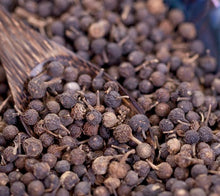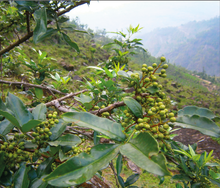Timmur Whole (टिम्मुर, तिम्बुर गेडा ) Szechwan pepper timur from Nepal
Regular price
£2.99
Sale
Szechwan pepper timur Whole from Nepal
Timmur - ( नेपाली टिम्मुर, तिम्बुर गेडा )
Sichuan pepper has a unique aroma and flavour that is not hot or pungent like black or white pepper, or chili peppers. Instead, it has slight lemony overtones and creates a tingly numbness in the mouth (caused by its 3% of hydroxy-alpha-sanshool) that sets the stage for hot spices. According to Harold McGee in On Food and Cooking, second edition, p429 they are not simply pungent; “they produce a strange tingling, buzzing, numbing sensation that is something like the effect of carbonated drinks or of a mild electrical current (touching the terminals of a nine-volt battery to the tongue). Sanshools appear to act on several different kinds of nerve endings at once to induce sensitivity to touch and cold in nerves that are ordinarily nonsensitive. So theoretically may cause a kind of general neurological confusion.”
The Indian subcontinent uses a number of varieties of Sichuan pepper. In Konkani it is known as tephal or tirphal. In Nepali, Z. alatum is known as timur, while in Tibetan, it is known as yer ma and in Bhutan as thingay. In Indonesia’s North Sumatra province, around Lake Toba, Z. acanthopodium is known as andaliman in the Batak Toba language and tuba in the Batak Karo language.
In America, it is possible to come across names such as “Szechwan pepper,” “Chinese pepper,” “Japanese pepper,” “aniseed pepper,” “Sprice pepper,” “Chinese prickly-ash,” “Fagara,” “sansho,” “Nepal pepper,” “Indonesian lemon pepper,” and others, sometimes referring to specific species within this group, since this plant is not well known enough in the West to have an established name. Some brands also use the English description “Dehydrated Prickly Ash” since Sichuan pepper, and Japanese sansho, are from related plants that are sometimes called prickly ash because of their thorns.


